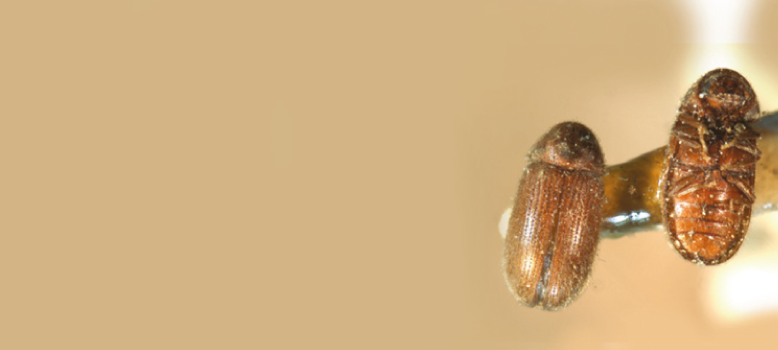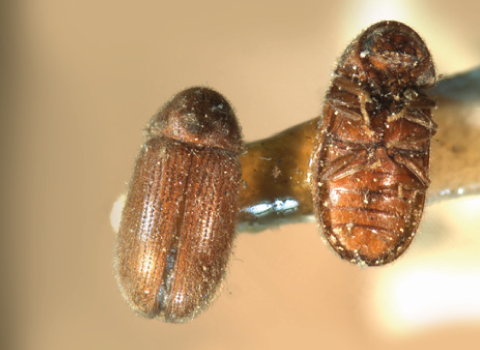Biscuit Beetle
So called because they are commonly attracted by flour, biscuits, cake mix, spices, cereal or soup powders, the Biscuit Beetle can often be found attacking stored foods in kitchen cupboards or larders. They are extremely persistent and have been known to penetrate tin foil, lead or even bore through a whole book.
For biscuit beetle pest control can be achieved by keeping foods in air-tight plastic, glass or metal containers. Once the biscuit beetle has got into foods, throw out any infested items and thoroughly clean residues from areas where the beetles or their grubs have been found. Treatment can then be carried out using insect powders, a household insecticide or a suitable aerosol, treating any surfaces or crevices where they may still be lurking.
The Biscuit Beetle is found worldwide but more commonly in temperate latitudes. It is common throughout the UK, especially in food storage and retailing premises, and are frequently encountered in a domestic property. They are small reddish-brown insects, only about 3mm long, which attack stored foods in domestic cupboard and larders.
Very similar in appearance and closely related to the Common Furniture Beetle (Woodworm), these insects can easily be confused and misidentified.
Flour, biscuits, cake mixes, cereals, spices, meat and soup powders will attract them most, however, they will thrive on other substances such as poisonous substances like strychnine, belladonna and aconite – hence the beetle’s American name; Drug Store Beetle. They have also been known to penetrate tin foil and lead, and have even bored through a shelf-full of books.
The white larvae are very small and quite active when they hatch. They feed and grow for about two months or so, depending on temperature, the larvae pupate inside cocoons, often within the food material, and one or two weeks later the adult’s hatch, their emergence holes resembling typical ‘woodworm’ (Anobium) exit holes. Mating takes place soon after emergence. The adults fly, but do not feed and live for relatively short periods of three to four weeks.




